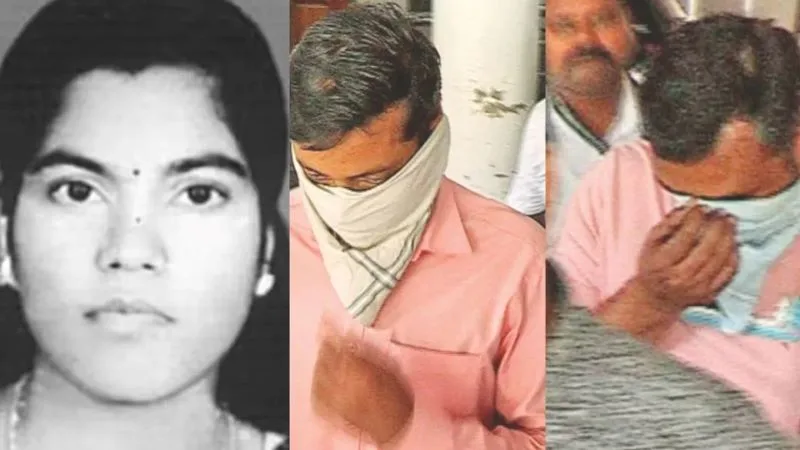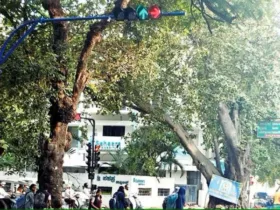In a remarkable turn of events, the chilling Kerala Triple Murder Mystery that had baffled investigators for nearly two decades in Kerala was finally solved, thanks to an innovative combination of artificial intelligence (AI) and traditional investigative techniques. The Kerala Triple Murder Mystery case, which had remained unsolved for 19 years, involved the brutal killings of a woman and her two infant daughters in February 2006, a crime that had left the authorities stumped and the local community in shock. Kerala Triple Murder Mystery wasn’t until 2023 that the Kerala Police, using modern AI technology, were able to crack the Kerala Triple Murder Mystery case, leading to the identification and arrest of the two perpetrators in January 2025.
The Crime: A Shocking Triple Murder
The Kerala Triple Murder Mystery tragedy occurred in Anchal, a small town in the Kollam district of Kerala. On the night of February 22, 2006, Ranjini, a 24-year-old woman, and her twin daughters, only 17 days old, were brutally murdered in their home. The bodies were discovered with visible signs of violent attack, which shocked the community and left investigators with a perplexing case. There was no clear motive at the time of the crime, and no immediate suspects, which made it a classic cold case. The investigation initially pointed to a potential link to the woman’s personal life and relationships but failed to yield any concrete leads.
The Kerala Triple Murder Mystery case quickly became one of the most high-profile unsolved murders in the region, drawing attention not only locally but also nationally. The lack of evidence and witnesses meant that law enforcement agencies had to work with limited resources, and the mystery remained unsolved for nearly two decades. During this period, several theories were floated, but none led to the arrest of the culprits.
The Breakthrough: AI and a Wedding Photo
After years of stagnation in the Kerala Triple Murder Mystery case, in 2023, a new approach was taken by the Kerala Police. The force’s Technical Intelligence Wing, which specializes in modern investigative techniques, began re-examining several cold cases using advanced artificial intelligence (AI) tools. Among these was the triple murder case. The police knew that to solve the case, they would need to employ innovative methods that could reveal new leads from the limited evidence available.
One of the most important breakthroughs came from enhancing an old wedding photo of the suspected perpetrators. This photograph was one of the few pieces of evidence from the case that had been retained over the years. The police, utilizing AI-powered software, enhanced the image of the two main suspects—Divil Kumar and Rajesh—who were believed to have been involved in the crime. The AI technology helped improve the clarity of the image, and it was this enhanced photo that eventually became crucial in the investigation.
The AI system used by the Kerala Police helped create a digital representation of what the suspects might look like now, based on their age and physical characteristics at the time of the crime. These AI-generated images were then cross-referenced with known social media profiles to see if any matches could be found. As the technology scanned through hundreds of profiles, it finally came up with a lead that would change the course of the investigation: the AI found a profile that showed a remarkable resemblance to one of the suspects, Rajesh, who was now using the name Praveen Kumar and was living in Puducherry, more than 600 kilometers away from Kerala.
This was a significant turning point in the case. The identification of Rajesh, along with his alias, allowed the police to narrow down their search to a specific region. Following this lead, investigators discovered that Rajesh, who had been living under a false identity for years, had changed his profession. He was now working as an interior designer in Puducherry, evading the authorities and successfully keeping his past hidden. The use of AI technology had enabled the investigators to trace his new identity with remarkable accuracy.
The Arrest of Divil and Rajesh
Further investigation revealed that the second suspect, Divil Kumar, had also been living under a different identity. He was found to have assumed the name Vishnu and had been residing in Puducherry as well. Like Rajesh, Divil had been working as an interior designer, continuing his life under a fake identity. The two men, who were former army personnel, had evaded authorities for nearly two decades, effectively hiding their involvement in the brutal crime.
The breakthrough came in January 2025, when the Central Bureau of Investigation (CBI), which had taken over the case, successfully arrested both Divil and Rajesh in Puducherry. Their capture brought an end to the 19-year-long mystery. Both men were charged with the triple murder, and the case was finally closed. Investigators uncovered that the two had planned and executed the murders in a fit of rage, driven by personal motives linked to their relationship with Ranjini. It was a brutal act that had been meticulously covered up for almost two decades.
The Role of AI in Modern Crime Solving
The resolution of the Kerala triple murder case stands as a testament to the power of AI in solving long-standing criminal cases. Artificial intelligence has increasingly become an indispensable tool in modern law enforcement, providing law enforcement agencies with innovative ways to analyze and process vast amounts of data. The AI technology used in this case helped recreate an accurate image of the suspects based on old photographs, which led to the identification of the perpetrators.
AI’s role in solving cold cases is transforming the way police approach investigations. By enhancing old evidence, cross-referencing with social media profiles, and predicting the appearance of suspects, AI is giving investigators new avenues to explore. It has proven to be an invaluable tool for investigators who are working with limited or outdated information. In this case, the AI-enhanced photographs and the subsequent cross-referencing with social media profiles were crucial in unmasking the culprits who had been living under false identities for so many years.
The Wider Implications for Law Enforcement
The successful application of AI in this case highlights the growing importance of technology in law enforcement. As AI continues to evolve, its potential for improving criminal investigations will only increase. AI can be used to analyze large datasets, detect patterns, and identify connections that might otherwise go unnoticed. In this case, AI didn’t just help identify the perpetrators; it also helped uncover how they had been able to hide their identities for so long. It shows that AI is not just a tool for modernizing police work; it can also provide solutions to old problems that once seemed insurmountable.
The use of AI also raises questions about privacy and the ethical implications of relying on such technology for surveillance and investigations. However, in the case of the Kerala triple murder, it is clear that AI played a key role in ensuring that justice was finally served after many years of uncertainty.







